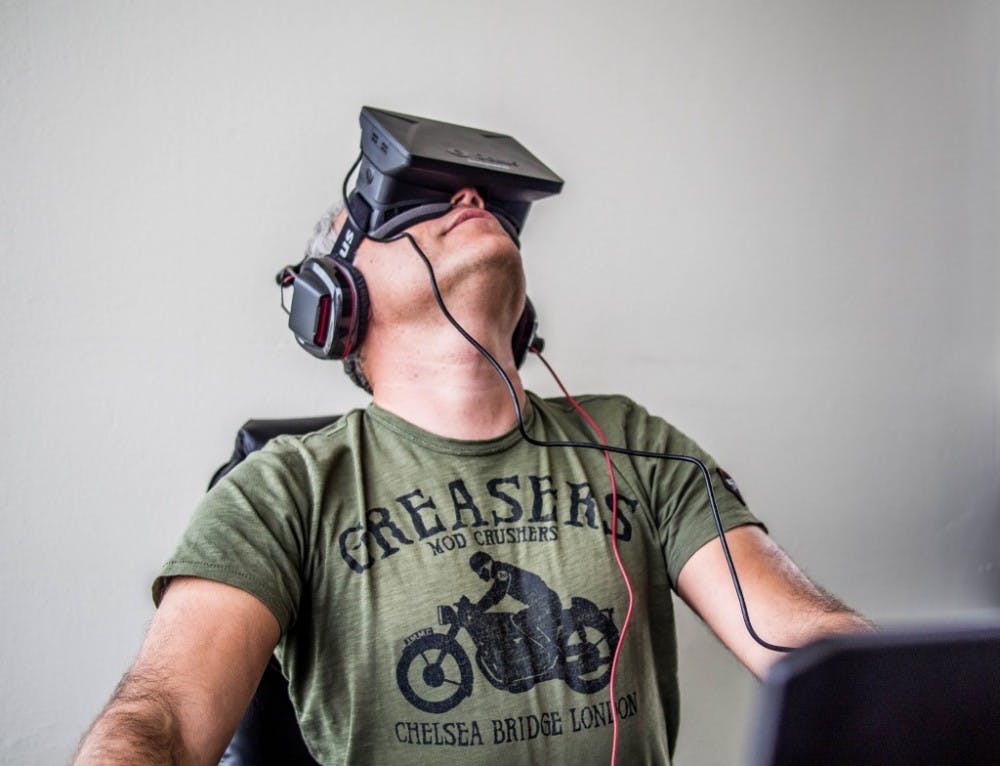Not long ago, virtual reality seemed like a distant futuristic technology. However, a device called the Oculus Rift, which was newly released on March 28, may change this.
Palmer Luckey, the creator of Oculus Rift, was a young visionary who dreamed of a homemade headset that could revolutionize everything from the gaming industry to the medical field.
Where other companies had failed in the 1980s and 1990s, Luckey saw an opportunity to provide an affordable virtual reality headset. In 2012, the once independent company of Oculus proposed a Kickstarter campaign to fund the Rift’s development. They successfully reached their goal and raised a total of $2.5 million for its development.
A few weeks after trying out the new gadget, Facebook founder Mark Zuckerberg saw potential in the technology and decided to buy the company for $2 billion.
“Imagine enjoying a courtside seat at a game, studying in a classroom of students and teachers all over the world or consulting with a doctor face-to-face — just by putting on goggles in your home,” Zuckerberg wrote in a Facebook post.
The cutting-edge technological components of this headset create a sense of complete immersion in a three-dimensional world.
In a very simplistic way, the headset works by splitting out two near-square video feeds to the same screen. Both screens have different angles, which provides users with a sense of depth. You can experience this addition of depth by looking at a nearby object and then closing your left or right eye and seeing how the angle changes slightly.
The device connects to your computer via both an HDMI and USB cable — one transfers visual feeds and the other transfers information. The headset also contains a USB port, which allows it to connect to controllers or other supporting accessories.
The headset also contains a USB port, which allows it to connect to controllers or other supporting accessories.
To know where you are located in 3-D space, the Oculus Rift comes with a microphone-shaped pole that can be placed on top of a desk. This sensor monitors a series of infrared lights embedded in the headset by making use of what Oculus calls the Constellation Tracking System.
It also has infrared lights in the back to allow the user to look in the opposite direction.
With vertical and horizontal straps, the headset can be adjusted for comfort. The HDMI and USB cables are located on the top strap of the headset.
To provide a more customizable product, two lenses that magnify the screen are included. The final consumer version has different frame sizes and types, so people don’t have to wear contact lenses when using it. The distance between a user’s eyes is not a problem, because the headset is readily adjustable.
“It feels like you just put on a pair of glasses,” Brendan Iribe, Oculus CEO, said during an Oculus Rift launch event.
The key component of Oculus is the Adjacent Reality Tracker, which is composed of a magnetometer, a gyroscope and an accelerometer.
Together these tools transfer accurate three dimensional measurements and data to track any infinitesimally tiny head movements.
Not only does Oculus deliver an immersive visual environment, but it also incorporates both head-related transfer and head tracking functions to create a sense of true 3-D audio.
By continuously sending huge amounts of data back and forth, Oculus presents a smooth virtual reality experience. However, due to its high hardware and computer processing demand, only desktops with an Nvidia GTX 970 GPU or similar graphics specifications can properly explore its true potential.
Thanks to its partnership with Microsoft, Oculus will be released along with a selection of existing games and with Windows 10 compatibility. The bundle will come with an Xbox One controller, and, if users want a more immersive experience, they can wait for the release of the two new wireless controllers called Oculus Touch.
Unlike phone releases, which generate a massive marketing blitz, the virtual reality headset will simply arrive at the doorsteps of those who are willing to spend $600 to purchase the immersive technology.
Although expectations for the Oculus Rift were high last year, they have decreased this month, due to the limited supply of headsets and the small amount of consumers who own PCs that are actually fast enough to run the new program. In addition, concerns about the potential for motion sickness and other health issues have been raised.
Even the most devoted supporters admit that it is going to take time for the industry to consolidate — the adaptation will be a multi-year process. Moving forward, the company’s CEO would like to focus on the headset’s design and anticipates that the technology will one day evolve to feel more like a pair of sunglasses.
Other companies, such as Sony and HTC, will soon release their own virtual reality headsets. Only time will tell which company will come to dominate the market and present the most immersive and affordable VR device.

















